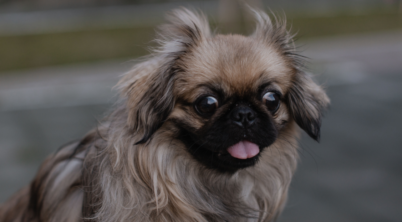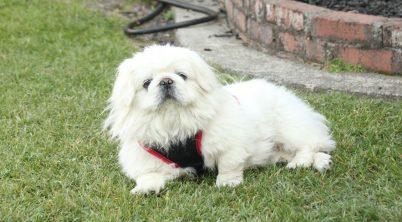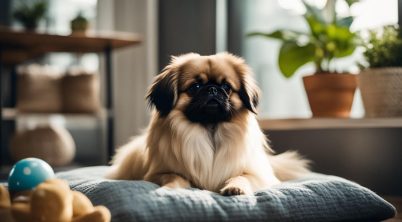The Pekingese, known for its regal demeanor and lion-like appearance, often carries a price tag reflective of its royal Chinese ancestry. The cost of a Pekingese puppy ranges broadly typically from $800 to upwards of $3,000. Various factors influence this price, including the dog’s pedigree and the reputation of its breeder. Initial investment aside, owners should also budget for the first year of expenses, which encompasses items such as vaccines, supplies, and routine veterinary care.
After the first year, the costs associated with owning a Pekingese level out to an estimated average of about $1,030 per year, which translates to roughly $86 per month. These recurrent expenses include, but are not limited to, food, ongoing veterinary care, grooming, and any additional training that may be required. Over the lifetime of the dog, the total cost of ownership can amount to around $15,665, creating a long-term financial consideration for potential owners.
Before welcoming a Pekingese into one’s home, prospective buyers should understand that the purchase price is just the entry point into dog ownership. Continuous care costs, although significantly lower than the first-year expenses, are an ongoing commitment. The Pekingese’s enduring companionship and the joy it brings to a household are intrinsic qualities that many owners find invaluable.
Table of Contents
Breed Overview
The Pekingese, a toy dog breed with a regal history, originates from China. They are known for their lion-like appearance, leading to the nickname “lion dog.” This breed was once held in high regard by Chinese royalty, and it was not until the Opium War in the 19th century that they were introduced to the Western world.
Physical Attributes:
- Height: 6-9 inches
- Weight: Up to 14 pounds
- Coat: Long, coarse, and double-coated
Their coat, which comes in various colors, requires regular grooming due to its length and density. Despite their small size, Pekingese have a sturdy build, with a broad, flat face—a distinctive feature of the breed.
Characteristics:
- Demeanor: Confident and self-assured, the Pekingese carries itself with a noble and dignified posture reflective of its royal ancestry.
- Temperament: This breed is affectionate with their family but can be reserved around strangers. They tend to be independent and possess a spirited charm.
These dogs have a history intertwined with Chinese culture and legends. It is said that the Pekingese is a product of the mythical union between a lion and a marmoset, a tale that reflects their bold spirit in a petite frame. Owned exclusively by Chinese royalty for centuries, they symbolized wealth and were coveted as imperial pets.
Historically, the Pekingese was a breed of high status—cherished and revered by emperors and empresses. Their size made them ideal for palace life, and they were often seen in the company of Chinese nobility. This connection to royalty contributes to their esteemed legacy as a cherished companion.
Acquiring a Pekingese
When considering the acquisition of a Pekingese puppy, understanding the associated costs and identifying reputable sources are critical considerations.
Understanding Cost Factors
The average cost of purchasing a Pekingese puppy is subject to various factors, including the breeder’s reputation, geographical location, and the puppy’s lineage.
- Average Price Range: Buyers can expect to pay between $800 to $3,745 with the average landing around $1,800.
- Initial Costs: Beyond the purchase price, initial expenses include items such as a crate, bed, collar, leash, toys, and the first-year vaccines and deworming treatments, which can altogether edge upwards of $3,305.
Prospective owners should be prepared for these costs to ensure they can provide a suitable home for their Pekingese.
Finding Reputable Sources
Reputable breeders are essential for ensuring a healthy and ethically bred Pekingese. A level of due diligence is required to assess these sources:
- Breeders: Seek breeders who have a no puppy mill promise and can provide health clearances for the puppies.
- Pekingese Rescue: Adoption through rescue organizations or dedicated Pekingese rescue groups offers an ethical alternative to purchasing a puppy, often at a lower cost.
- Where to Find a Pekingese Puppy: Platforms like PuppySpot are cited for verifying breeders and guaranteeing the health and safe arrival of puppies.
Selecting a responsible breeder or adopting through a reputable rescue can lead to a more informed and secure transaction.
Care and Maintenance
Owning a Pekingese comes with a special set of care and maintenance requirements to ensure their well-being. From grooming needs to diet and nutrition, and health and veterinary care, each aspect is crucial for the longevity and happiness of this ancient breed.
Grooming Needs
The Pekingese possesses a luxurious double coat that requires regular maintenance. Grooming should be performed several times a week with a focus on brushing to prevent matting and manage shedding. A thorough bath is recommended monthly, but owners should be cautious to dry the coat completely to avoid skin issues. Trimming around the dog’s paws and rear end is essential for hygiene and comfort.
Diet and Nutrition
A Pekingese should have a well-balanced diet that provides all the necessary nutrients to maintain their energy levels and health. Owners should invest in high-quality food and ensure fresh water is always available in clean food and water bowls. Adult Pekingese typically do well with two meals a day, and portion control is vital to prevent obesity, which can lead to other health issues.
Health and Veterinary Care
Pekingese can be prone to certain health issues, including eye problems, intervertebral disc disease, and patellar luxation. Prospective owners should budget for routine medical expenses, such as annual check-ups and vaccinations, and preventive measures. On average, a Pekingese owner might expect to allocate around $600 annually for routine vet care. It’s imperative to have access to a trusted veterinarian and to schedule regular visits to monitor the dog’s health.
Training and Behavior
Training Pekingese requires an understanding of their character and needs. Owners should anticipate certain costs related to training, which imparts critical behaviors such as potty training and leash manners. Early socialization and setting the groundwork for good behavior is equally vital, as these dogs can display great affection towards their family.
Training Essentials
Training a Pekingese should start early to ensure they learn essential behaviors effectively. Initial training focuses on:
- Potty Training: Essential for cleanliness and to prevent accidents at home. Consistency and patience are key in teaching a Pekingese where to relieve itself.
- Leash Training: Pekingese need to be comfortable on a leash for safe walks. Teaching them to walk without pulling requires gentle, consistent guidance.
- Training Costs: The investment in professional training can vary but expect costs for puppy training, basic obedience, to advanced skills. These can range broadly depending on the trainer and type of training.
Owners should consider whether to train the dog themselves or seek professional help, which can affect the overall training costs.
Socialization and Interaction
Proper socialization is critical for a Pekingese to develop well-rounded behaviors:
- Socialization: Introducing the Pekingese to a variety of people, pets, and environments can help prevent territorial or aggressive behaviors.
- Behavior and Affection: These dogs are known for their loyalty and love for their family. Positive social interactions help channel their natural affection and prevent the development of undesirable behaviors.
Early and consistent socialization helps mitigate possible behavioral issues and cultivates a sociable temperament conducive to both human and animal companionship.
Living with a Pekingese
Living with a Pekingese offers a unique experience due to their distinct temperament and care requirements. These companion dogs are affectionate and make loyal family pets, but their needs must be well understood for a harmonious life together.
Compatibility with Families
The Pekingese is known for being particularly affectionate with their family. They are loyal dogs that often form strong bonds with their owners. While they can be good with children, their interaction should be supervised, especially with younger children who may not understand the Pekingese’s need for gentle handling. It’s important to educate all family members on respecting the dog’s boundaries.
- Temperament with families: Loyal and affectionate, better with older children
- Adaptation as family pets: High, if treated with consideration
Exercise and Activity Level
Although Pekingese have a moderate activity level, they require daily exercise to maintain their health. However, due to their small stature, their exercise needs are not as demanding as those of larger breeds. A couple of short walks and some playtime indoors are typically sufficient.
- Daily exercise requirements: Moderate; short walks and play
- Energy Level: Low to moderate; enjoys relaxation after activity
Pekingese make charming companions, thriving on attention and affection from their owners. They may require patience when living with other pets, as they can sometimes be possessive of their toys and space. With proper socialization, they can learn to coexist peacefully with other family pets.








